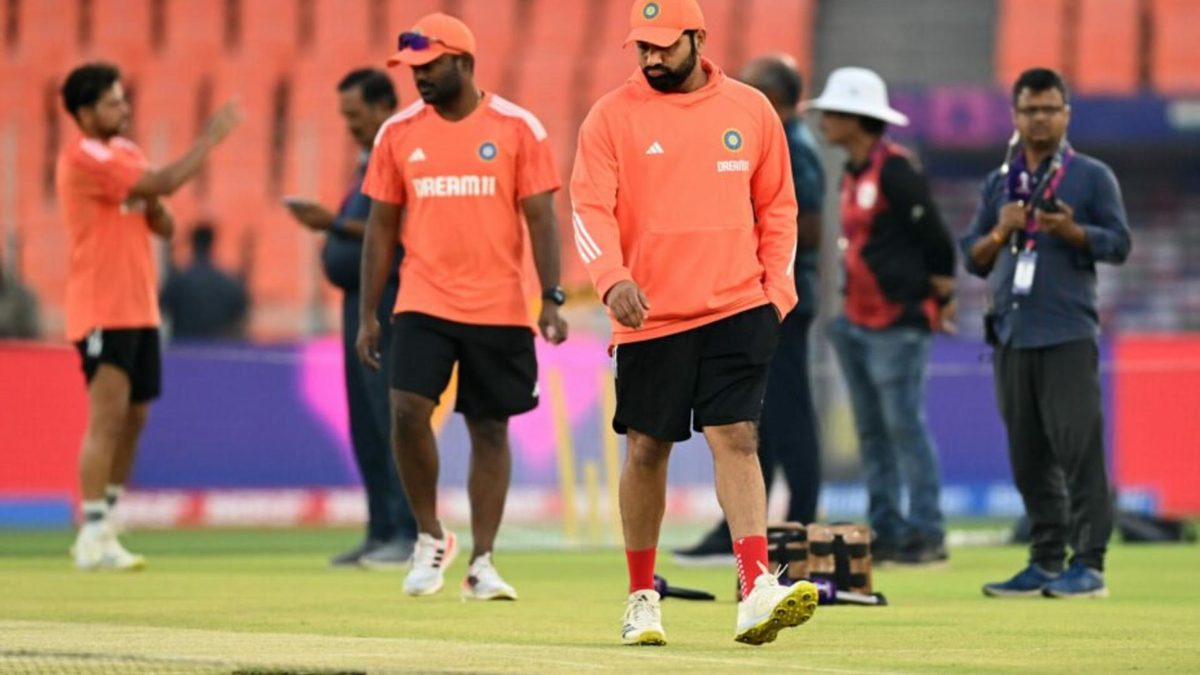
The toss has been the focus of considerable attention throughout the 2023 World Cup.
To bet on the World Cup with our Match Centre Partners bet365 head here.
In some cases this has been due to a particular side’s strengths – for instance, South Africa had a clear preference for batting first – while at other times discussion has zoned in on conditions and how they differ between innings. England, for example, were put off batting first after their experience in the tournament opener where they felt that dew hampered their feeble defence of 282. They subsequently decided to field in four of their next five matches, losing on every occasion.
For the final, neither Australia nor India have as strong a preference as South Africa for either call at the toss. Both have an even split for winning games either batting first or chasing, though India, having chased in their first five matches, have opted to bat first in each of their previous three games. Australia, on the other hand, have actually only won the toss twice in their eight-game winning streak, opting to bat first against the Netherlands and to chase against Bangladesh in their final group game at Pune.
How significant will the toss be at Ahmedabad?
Well, three of the four games played at the Narendra Modi Stadium so far this tournament have been won by the side that’s chased. The only exception to that pattern was a hapless England failing to haul down Australia’s 286 in early November. Dew has been a factor at the ground in previous games and slightly cooler conditions in late November have the potential to exacerbate its role in the game.
After that Australia-England game, Adam Zampa said that dew played a bigger factor that he had anticipated, saying: “Yeah, firstly it got quite wet early actually, probably earlier than we expected it to, but it still felt like for the first 20 or so overs the wicket was holding a little bit and still slightly slow. It was difficult to get wickets, but I think we did really well to get the rate up a little bit, but yeah, it was quite wet.
“The ball got swapped around about the 40 over mark, which we didn’t really ask for, the ball was getting wet when it got hit along the carpet, but it was kind of dryable compared to maybe Chennai in the first game where it was just really wet the whole innings.”
The effect of dew is two-fold. One, it can make the ball harder to grip, making life more difficult for spinners but also for seamers in their ability to bowl slower balls. Two, it can have the effect of speeding the pitch up and therefore improving conditions for the side batting second.
Conventional wisdom in big games is to bat first and use scoreboard pressure to your advantage, though historically there is not statistical evidence that batting first or second is preferable in a World Cup final.
Speaking ahead of the final, Australia captain Pat Cummins expressed the dilemma he may face at the toss – does he want his side to avoid fielding through the hottest part of the day, or when there is less dew?
“You’ve got to weigh up batting during the day when it might be a bit easier than under lights, but knowing that late in the second innings it could also slide on,” said Cummins.
“Again, it (dew) might only be the last quarter of the game but once that settles in and the ball is skidding on, it’s quite different.”
Cummins’ counterpart Rohit Sharma downplayed the potential threat of dew affecting conditions too much. “In terms of the conditions changing, yes the temperatures have dropped a little bit,” said Rohit. “I don’t know how much of a dew factor there will be because in the Pakistan game, when we trained before the game there was a lot of dew, but there was no dew during the game.
Ultimately though, Rohit was of the opinion that the toss will not be a determining factor in the result. “ Even a few days back at the Wankhede, when we were training there was a lot of dew, on the game day there wasn’t much so that’s why I keep saying the toss is not going to be a factor.”








